Wisdom Words Echoes

Summary
Wisdom Words Echoes is designed to help learners recall, learn, and share 成语 (chéngyǔ), 歇后语 (xiēhòuyǔ), idioms, proverbs, and sayings across cultures, and fostering inclusive cultural exchange through written, illustrated, and audio formats.
Have you noticed that your grandparents and parents often love to use idioms and proverbs?
These phrases carry a unique value—they’re great for expressing emotions, wisdom, and passing down life lessons. You can find idioms and proverbs everywhere: you learn them at school, hear them in daily life, and see them in books.
But with social media everywhere now, our generation tends to use emojis, abbreviations, and internet slang instead, so idioms and proverbs gradually fade out of our vision…
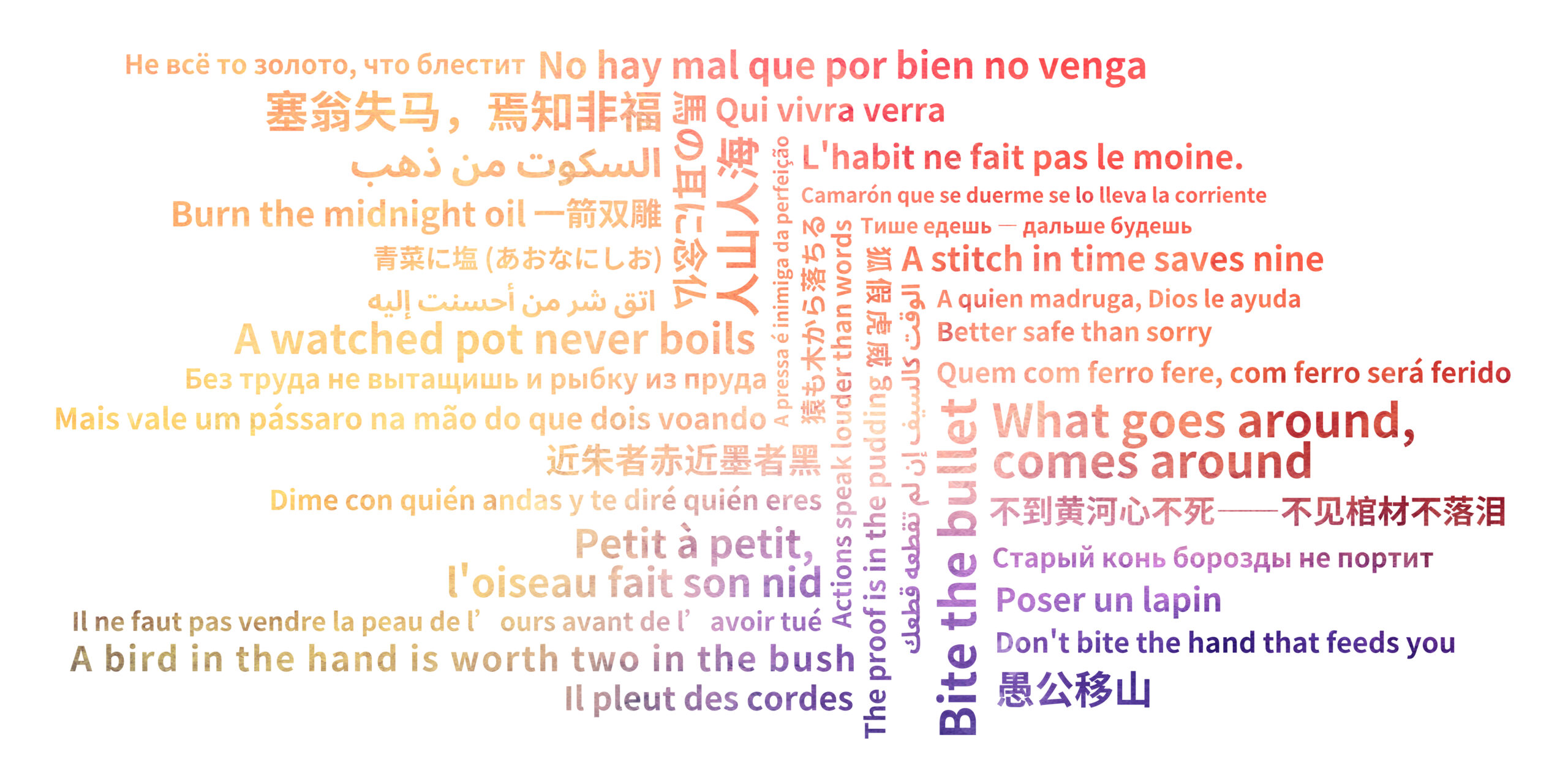
A vibrant word cloud showcasing global proverbs that show wisdom and diverse cultural perspectives.
Don’t worry!
With my toolkit, let’s bring idioms and proverbs back to life! You can even learn some from other languages along the way.
What do you need to participate?
- Skills:
Language (know at least one 成语 (chéngyǔ), 歇后语 (xiēhòuyǔ), idioms, proverbs, similes, and “one-liners.”)
Writing/Speaking (Either one will work, but having both would be ideal, ability to write/speak down the words and the right interpretation of words )
Painting (not necessary, if you want to draw some paintings to help other learners understand you need it)
Social skills/soft skills (not necessary, being able to talk with others to use it you’ve learned by this toolkit)
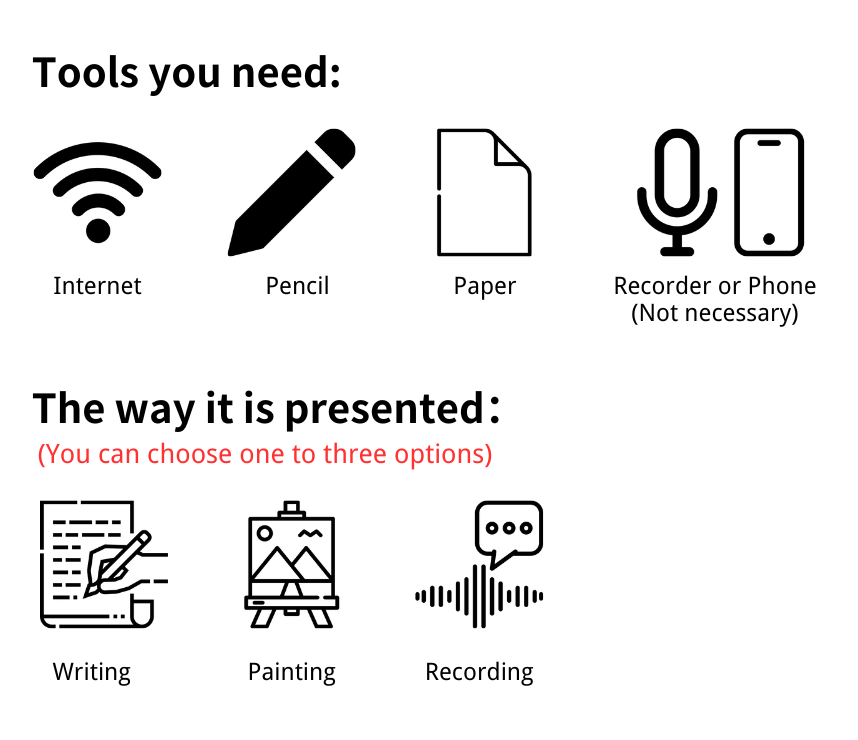
A simple and eye-catching illustration.
- Tools:
Internet (to collect from the internet search, share, and learn)
Pencil (one color is enough, multi-colors are better), Paper
Recorder (not necessary, if you want, you can record the voice of reading words and interpretations to help blind learners access your work)
- Methods:
Recollection
Search
Writing/speaking
Painting
LETS DO IT!
Step 1: Recall Expressions :
Please recall a cultural expression you have encountered before. This could include 成语 (chéngyǔ), 歇后语 (xiēhòuyǔ), idioms, proverbs, similes, or “one-liners” you have heard or used in daily conversations.
Example prompts:
- “Think of an idiom from your culture that you often hear.”
- “Recall a proverb your grandparents used to say.”
- “What similes do you use in your language?”
If you think of something, please write it down or type it into your electronic device. And we move to the next step!
Step 2: Validate and Research :
After recalling the expression, you need to search on the internet to find its true meaning and origin. You will look up:
- The definition or interpretation of the expression.
- Examples of the expression used in context.
- Origins of the expression (if it can be found).
- Provide a URL link to reliable sources (e.g., dictionaries, reputable cultural blogs, and language learning sites).
Give you some websites to get easy search:
Chinese:https://baike.baidu.com/ or https://www.zdic.net/
English:https://www.merriam-webster.com/ or https://www.urbandictionary.com/
Find the website and copy the link to help other learners quickly access the official explanation of this expression.
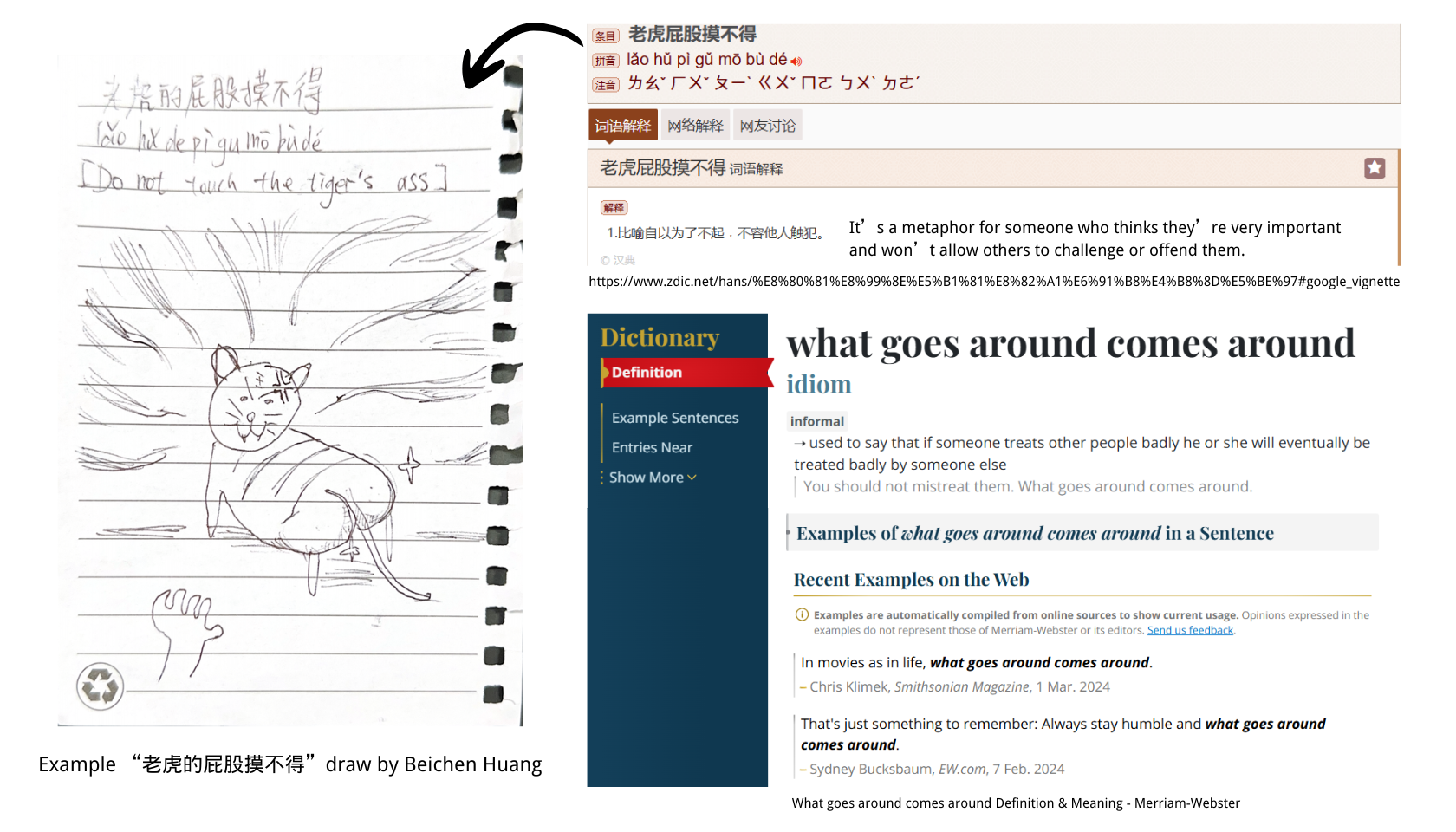
A scanned version of a work by Beicheng Huang on the Chinese idiom “老虎屁股摸不得” (You can’t touch a tiger’s backside), along with two screenshots. The first screenshot shows the official explanation and example of the Chinese idiom, while the second screenshot presents the official explanation and example of the English idiom “What goes around comes around” from their respective dictionaries.
Step 3: Explanation of the Expression :
Please write down, paint, or record audio about the meaning of the expression you recalled and validated through research. We encourage you to use your own understanding instead of the official explanation you copied over. In addition, don’t forget to include the URL link for the authoritative interpretation.
If you use Chinese, you can add phoneticize(“拼音”) to help people from other countries understand and search for this term.
If you are bilingual, please try to translate your words into other languages, such as English and Chinese.
I will give you some examples below:
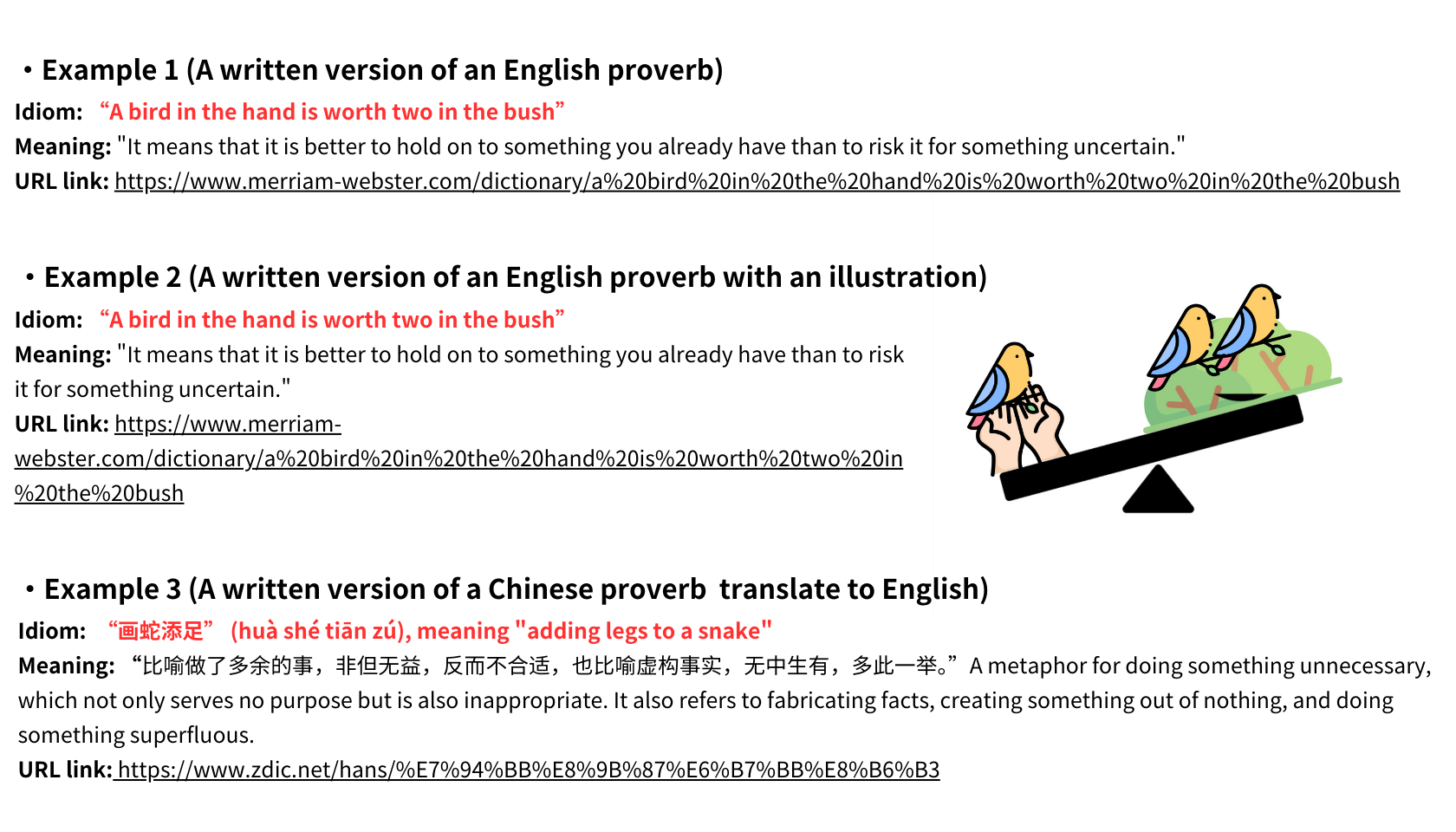
A simple text diagram showing the three possible final presentation formats of this toolkit.
Give you some help to get an easy start:
- You can draw on paper with the pencil.
- You can go to this website to get some drawing inspirations and stickers that provide over 17.4M+ free Icons and Stickers for you: https://www.flaticon.com/
- You can use this website to create a canvas, and then directly copy and paste the stickers you find on Flaticon onto the canvas to create your illustration: https://miro.com/
If you have time left over within 20 minutes, you also can do something to provide a more interactive and inclusive way to help the other learners:
- Recording audio: You can record yourself speaking of the expression and explaining it(like using your phone).
Step 4: Sharing and Interaction :
Publish your expression (written, illustrated, and audio) in the comment or go to LinkedIn https://www.linkedin.com/posts/%E8%93%89%E5%90%9B-%E6%B1%A4-7b822a330_this-is-a-toolkit-to-break-down-cultural-activity-7267632476284506112-KiK3?utm_source=share&utm_medium=member_desktop (This is a platform that can be accessed globally), share your work with others, ask questions, and compare expressions from different cultures.
In addition, you can comment and reply to each other’s expressions, contributing to mutual learning.
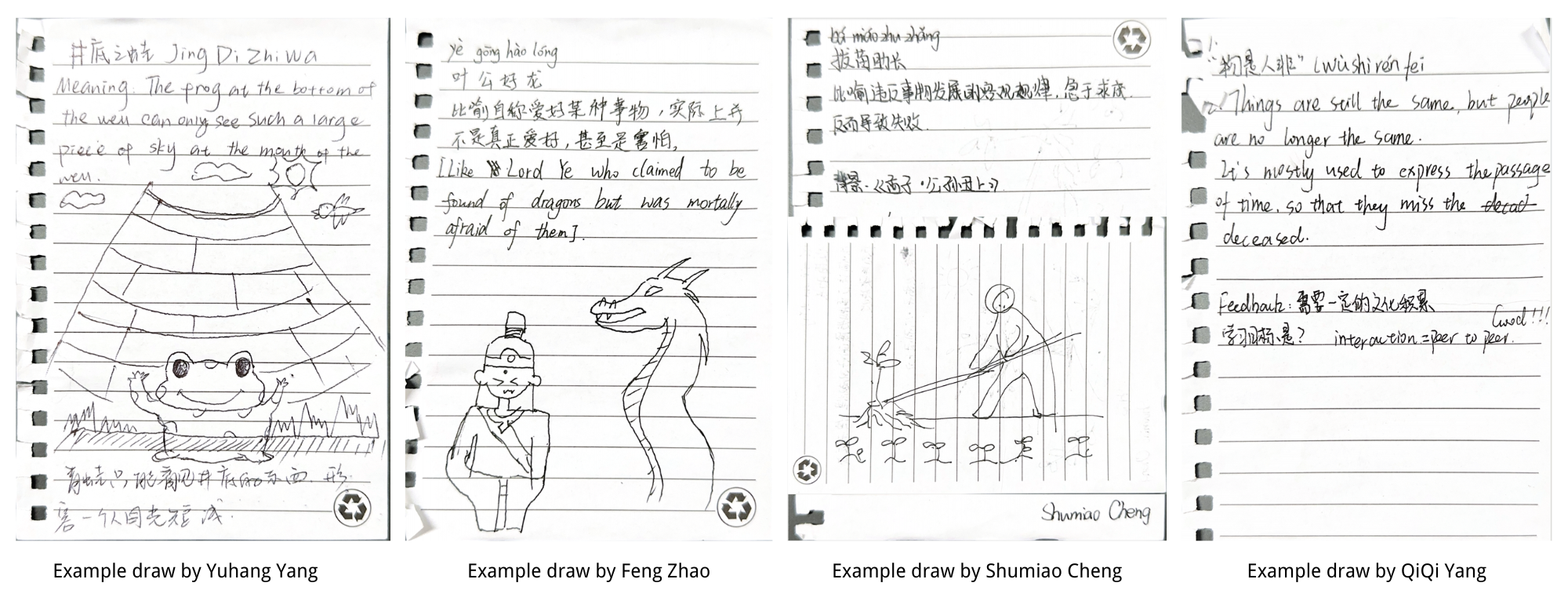
Examples of Chinese idioms interpreted by students, featuring hand-drawn illustrations and bilingual explanations.

Empty comment box encouraging users to leave a reply.
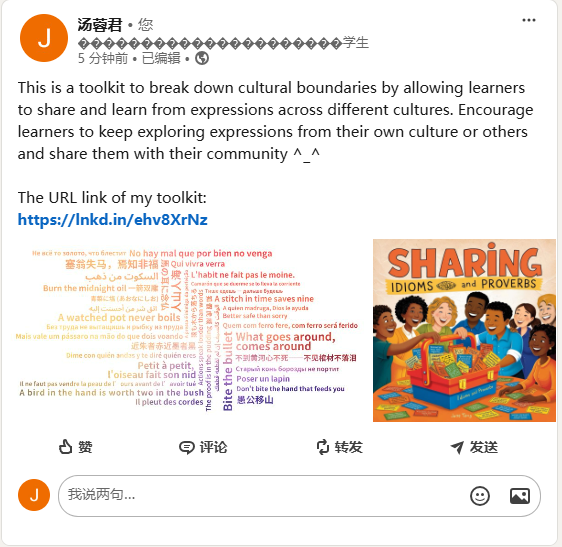
The screenshot of my Linkedln post.
step 5: Reflection/Feedback:
After completing this activity, reflect on the learning process thinking about what they’ve learned.
- You can answer some questions in the comments area like:
- “What did you learn about expressions from other cultures?”
- “Did you find any interesting similarities or differences between expressions from your culture and others?”
- “How did the drawing activity help you understand the expression better?”
- Feedback: Comment some feedback and your reflection on the toolkit (e.g., what worked well, and what could be improved), that will help me to improve this toolkit better 🙂
Conclusion
The toolkit helps to break down cultural boundaries by allowing learners to share and learn from expressions across different cultures. Encourage learners to keep exploring expressions from their own culture or others and share them with their community.
Hope you enjoy this learning experience ^_^
cover © 2024 by June Tang is licensed under CC BY-SA 4.0
Wisdom Words Echoes © 2024 by June Tang is licensed under CC BY-SA 4.0
The material you need © 2024 by June Tang is licensed under CC BY-SA 4.0
Research Example © 2024 by June Tang is licensed under CC BY-SA 4.0
The screenshot of my LinkedIn post. © 2024 by June Tang is licensed under CC BY-SA 4.0
Student Examples of Chinese Idioms © 2024 by June Tang, Yuhang Yang, Feng Zhao, Shumiao Cheng, QiQi Yang is licensed under CC BY-SA 4.0
(cover © 2024 by June Tang is licensed under CC BY-SA 4.0 )
(The screen shoot of my Linkedln post. © 2024 by June Tang is licensed under CC BY-SA 4.0 )
(Student Examples of Chinese Idioms © 2024 by June Tang, Yuhang Yang, Feng Zhao, Shumiao Cheng, QiQi Yang is licensed under CC BY-SA 4.0 )


